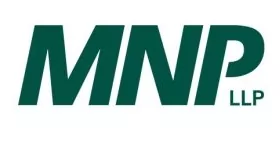This article originally appeared in The Western Producer.
Farm profitability analysis can help producers make decisions that will either earn more money or the same money with less work. Ultimately, there's no point in doing the analysis if it doesn't influence and change business behaviour.
BUDGETING
Carefully select the crops you wish to grow. Don't seed 300 acres of oats out of habit, believing you know intuitively what your gross margin will be. While planning next year's crop, put the plan on paper and force yourself to apply the most reasonable estimates of yields and prices. Budget for the right crop nutrients and protection package to maximize gross margin.
I would say the right inputs will maximize yield 95 percent of the time in Western Canada. There are no guarantees, but it's more profitable to hit 80 percent of a high budget than 80 percent of an average budget.
This seems obvious, but choose the most profitable crops to grow within the restrictions set out by crop rotation and chemical residuals. It's not always predictable which of your top four gross margin crops will be the winner from one year to the next. However, it's possible to identify your top four crops and those which have, historically, been your bottom three.
Durum versus spring wheat is a perfect example in parts of southern Saskatchewan. Durum outperforms hard red spring both in yield and price nine out of 10 years, so durum would be the logical choice.
MANAGEMENT
It's important to focus on factors within our control. We monitor factors that affect gross margin such as rainfall, temperature, and commodity prices, but these aren't where we focus our time and effort.
The same can be said about land considerations. Over the long term, we may strategically focus on renting / purchasing higher quality land, but over the short term it is hard to manage land costs to increase profits.
We should direct most of our attention to ensuring that we have enough labour and machinery and the quality management that is needed for these resources. Ineffective management of our labour and machinery during seeding, growing and harvesting will stack the cards against us.
Remember that the last five to 15 percent of the crop holds all the profit. We say good-bye to some or all of our profit if we take on more acres than we can manage. As well, too many crops makes it difficult to execute production activities efficiently. This isn't to say that managing a higher number of crops cannot be done. There's simply a lower probability of success. Limiting the number of crops reduces the number of equipment changes that waste time at critical points of production.
Labour, power, and machinery (LPM) is a difficult category to manage.The big improvement in machinery technology provides limitless options. Technology improvements can saves time and increase yield and capacity. However, how much more money do we make using our brand new air drill when compared to our four-year-old one? These nuances add another layer of complexity. The added value of increased capacity and / or technological improvements, such as consistent seed depth, varies from year to year, but will the profitability improvement outweigh the costs?
LPM shouldn't be micro-managed. Instead, it should be assessed with a five-year capital budget in mind while considering the following:
- The LPM benchmark numbers of your target group of peers. Don't compare to the industry average. Our goal is to strive for the best, and currently our top group of producers are targeting LPM of around $100 per acre.
- A simple rule is less is better. LPM is highly correlated with the amount and price of machinery. Two large combines cost less than three slightly less expensive combines with a similar total capacity. Trading our four-wheel drive tractors every seven years rather than every four costs less.
The content of this article is intended to provide a general guide to the subject matter. Specialist advice should be sought about your specific circumstances.

